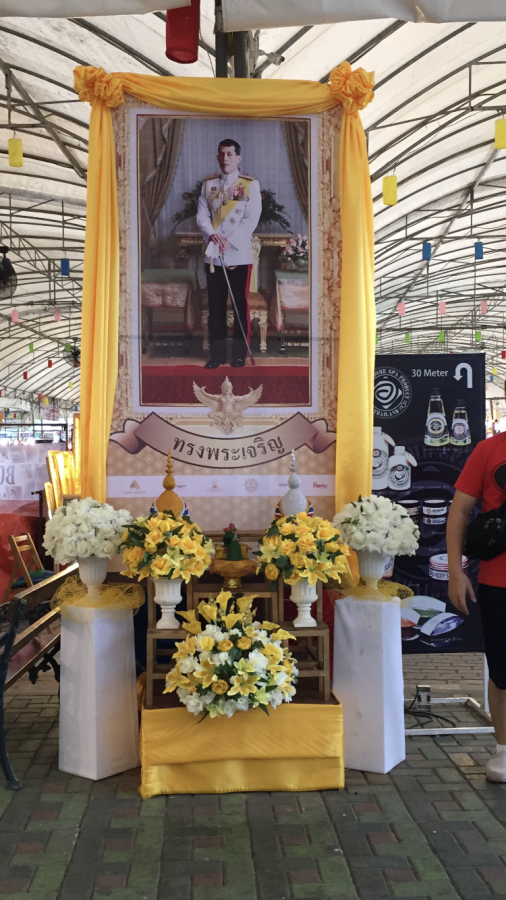Two Weeks in Thailand: Powerful Monarchs and Mountain People
January 17, 2019
This past summer I spent two weeks in the volunteering in the city of Chiang Mai, located in northern Thailand. The following series of articles will deal with what I saw, experienced, and learned halfway around the world. Below is an introduction to the city of Chiang Mai, Thailand.
As embedded into the landscape as golden temples and rice fields, an unforgettable image after any trip to Thailand is impossible to escape. On street-side billboards, murals in public buildings, and the entry to every home, photos of the King of Thailand adorns the nation. Wearing golden military fatigues, clasping a sword in his hands, and staring directly towards the viewer, his image has become a national emblem.
Along with Buddha, the king is the most revered figure in Thai society. Yellow flags often accompany the traditional flag of Thailand as yellow is the color of royalty in Thailand: government officials, teachers, or anyone looking to impress will wear yellow on special occasions to earn respect.
When the last King, King Bhumibol Adulyadej, died, pictures of hoards of citizens crying out in the streets circulated international media. But within days, his photos were replaced with that of his son and successor, King Maha Vajiralongkorn.
It is often difficult to comprehend the sheer admiration that the Thai people have for their King. To a western perspective, kings may seem despotic and monarchies a backward form of government, outdated by democracy.
This perspective does hold somewhat true in Thailand. While the government is a constitutional monarchy, similar to that of England, the kind still large amounts of power.
Any expression of dissent against the king can lead to 15 years in jail. There is state-run media and censorship is rampant, especially online. The King’s treatment of his past wives has been especially reprehensible, from banning them from the country to posting propaganda accusing them of adultery.
But just as much as the king can be seen as an oppressive despot, his positive influences on the country are just as apparent. In Thailand, the king is not seen as a controlling ruler, but a symbol of national pride.
Every time the king’s image is projected in the country, he is seen as a symbol of exemplary Thai society. Several times a day, the national anthem radiates from his image in public places and all stop in their path to respect their country.
It may be easy to call the Thai people ‘brainwashed’ or ‘blind,’ but the king does use his power for good. To see how the king has benefitted his country, one must look to the northern hill tribes.
The Royal Project for the Hill Tribes
While Thailand is a largely homogenous society, there are several minority groups who have collectively become known as ‘Hill Tribes’ because of their mountain villages and ethnic diversity. The most popular Hill Tribes are inhabited by the Karen, Hmong, Lisu, Akha, and Mien people.
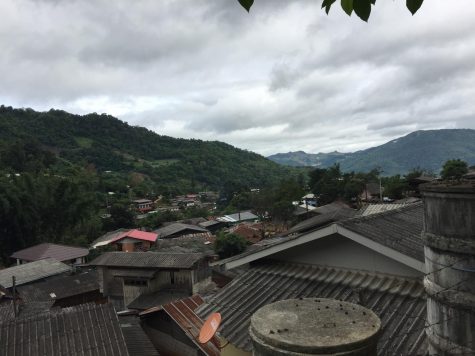
The hill tribes have long lived on the margins of Thai society. Living in isolated hill villages, they have been often denied both Thai citizenship and the economic growth that much of Thailand has experienced over the past few years.
But one other factor hindered the development of the hill tribes: their major cash crop, opium. Not only did the growth of opium build a negative image around the Hill Tribes for contributing to the national and global narcotics crisis, but it harmed to the soil, with dangerous slash and burn agricultural techniques.
By the 1980s, King Bhumibol took it upon itself to address the issues of the northern people, so the Royal Hill Tribe Project was created. The king sought to unite the tribes with the rest of the country, eliminate extreme poverty, and create sustainable development patterns within their societies.
The project began with the transition away from opium to coffee beans, avocados, lychee, and other local produce that could be sold at markets. Agricultural institutes, schools, and research centers were built on the fertile hills to serve farmers from the entire country. The former fields of opium were cleared and left in their ruined state to serve as a reminder of the crops harmful past.
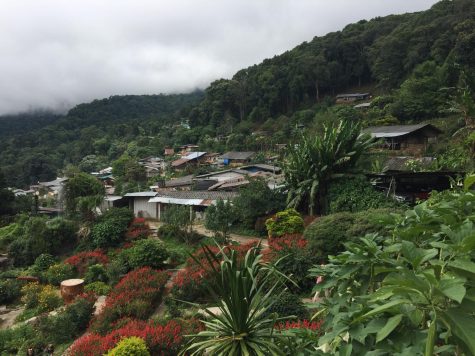
Secondly, the king sought an alternative method of supporting these tribal people, while strengthening their folk traditions: tourism.
Through advertising their ethnic traditions, beautiful landscape, and unique culture, the Royal Project for the Hill Tribes built up the villages to accompany the popular beaches in the south.
Like many tourist destinations in the developing world, opening the tribes up to tourism has been a risky move. On one hand, tourism allows a method for tribal peoples to share their own culture with others, while making money selling traditional crafts, clothing, food, and opening museums. However, whenever humans are the main attraction, there is always a threat of exploitation.
Many tour groups charge entrance fees, which never make their way back to the village. Villagers who dress in elaborate costumes asking tourists for photos, a common sight, are often forced by tourism agencies to peddle Westerners.
Despite the problems, villagers still rely on tourism, and there are ethical ways to visit, such as overnight homestays or visiting independently.
While the complex history is still changing, the lives of these villagers has drastically changed and improved since the Royal Project began. While sixty years ago many viewed these peoples with disdain and shame, the efforts of King Bhumibol have brought them from outsider status to welcome signs in Thai airports.
In villages across Thailand, the effects of the Royal project are clearly visible. A Karen tribe use their centuries old environmental procedures to take care of endangered elephants in sanctuaries across the north to bring up the population of the national animal.
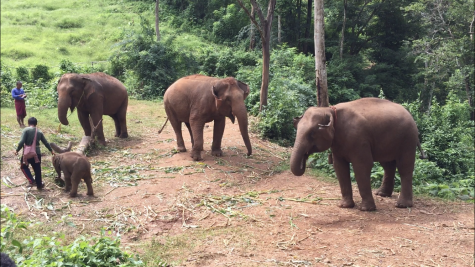
In a Hmong village, the Village Elder tours his village and reflects on how it has changed. He reflects on the opium fields which frame the village and act as a sobering reminder to the villagers: “the soil is brown and bad. We leave the fields bare to remind us of our past, and that we must move into the future.”
At 74, the Elder continues to work his farm, which he has carved into the mountain near his home. Now, he can “grow anything [he] wants,” and can use the land to subsistence farm for his family.
Most of the village has turned to subsistence farming after opium and focused on cultural crafts to sell in stalls that line the village walkways. Many are happy to leave opium and feel a sense of relief for the children of the village to take on more sustainable farming methods.
Along with agricultural and economic change, the village has also experienced social development as a result of the Royal Project. On the wall of the village meetinghouse, lies a few graphs and charts, which serve to disprove commonly held belief that if women don’t marry a man, bad harvests and plagues will not plague the village. A list of rules girls in the village should follow accompanies the charts, including “if a man has many wives, each wife can have many husbands.”
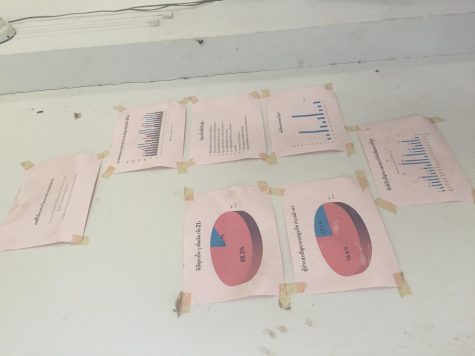
While the Hmong people enjoy their new life, they still have a long way to go. Running water and electricity is scarce, and above all many Hill Tribes struggle in citizenship within Thailand, a long and continuing battle they fight.
The plight of the hill people cannot be solved by one King, as they are woven into Thailand’s complex cultural and political tapestry.
When King Bhumibol’s son takes office (he has been in limbo during a period of official mourning for his father, neglecting to take on official duties yet), he will inherit a complicated legacy of censorship and development in all parts of the country. While it is impossible to tell how he will rule, it is certain he will wield an extraordinary amount of power, which can be used to uplift minorities or crush the rights of the people.
For more Information:
https://www.chiangmaitraveller.com/7-hill-tribes-northern-thailand/
https://www.wheresidewalksend.com/thai-hill-tribes-debate/
https://www.thejakartapost.com/news/2014/12/05/royal-projects-thailand.html
https://freedomhouse.org/report/freedom-net/2017/thailand

